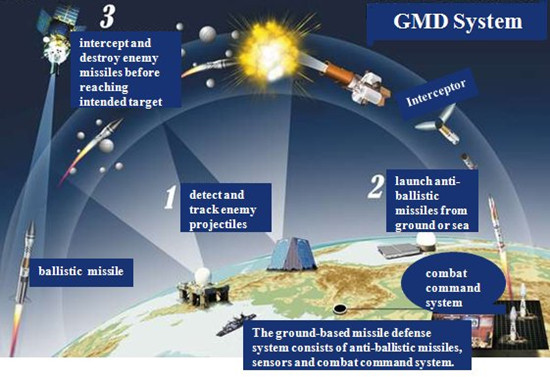
Illustration: ifeng.com/Globaltimes.cn
China again carried out a land-based mid-course missile interception test within its territory on January 27, according to the Information Bureau of China's Defense Ministry.
"The test has reached the preset goal," an official with the bureau said, adding that the test is defensive in nature and targets no other country.
It has been the second time that China announced such kind of missile test. A similar anti-missile interception test was successfully conducted on January 11, 2010.
Such tests, which involve highly complicated technologies in detecting, tracking and destroying a ballistic missile flying in the outer space, have only been tried before by the United States and Japan.
Significance
The success in the anti-missile test, together with a string of other military equipment progress including the sail of China's first aircraft carrier and the test flight of a giant airfreighter, has demonstrated the country's fast-growing ability to defend its own national security and deter any possible threats.
Mid-course interception missile
The mid-course interception missile is actually comprised of a large booster rocket and interception warhead. The booster is like a carrier rocket, which sends the warhead into the atmosphere while the warhead of the mid-course interceptor is the equivalent of a "small missile".
This "small missile" is equipped with dynamic, tracking and target recognition systems. The dynamic system drives the warhead and locks its target; the guidance system compiles its targets data, especially infrared signature. These systems track and identify the target, ultimately guiding the warhead to intercept the oncoming projectile.
Interception warhead
The interception system is made up of a booster rocket and warhead, the latter of which is more difficult to develop. In order to reduce its size, the structure was designed to be as small as possible. Since accuracy is of the utmost importance, the guidance system is highly sensitive to movement and finely tuned to maintain a lock on its target.
Employing a fast-burning conflagrant booster rocket is necessary in order to deliver the warhead into the atmosphere as rapidly as possible. However, maintaining accuracy at such high speeds is very demanding. If the margin of error goes beyond the comfortable range of the guidance system, the missile may fail to reach its target.

Copyright ©1999-2011 Chinanews.com. All rights reserved.
Reproduction in whole or in part without permission is prohibited.